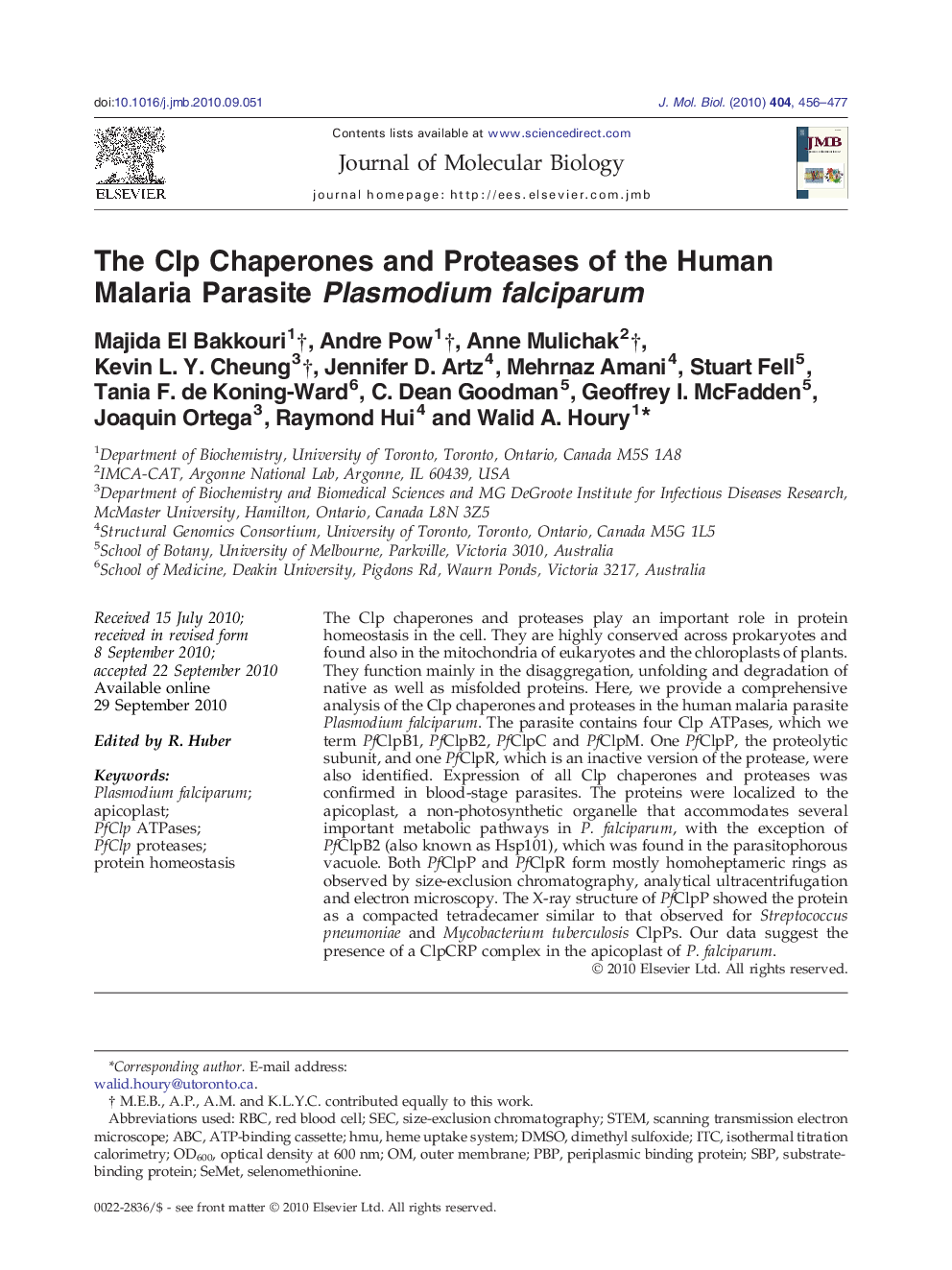| Article ID | Journal | Published Year | Pages | File Type |
|---|---|---|---|---|
| 2185737 | Journal of Molecular Biology | 2010 | 22 Pages |
The Clp chaperones and proteases play an important role in protein homeostasis in the cell. They are highly conserved across prokaryotes and found also in the mitochondria of eukaryotes and the chloroplasts of plants. They function mainly in the disaggregation, unfolding and degradation of native as well as misfolded proteins. Here, we provide a comprehensive analysis of the Clp chaperones and proteases in the human malaria parasite Plasmodium falciparum. The parasite contains four Clp ATPases, which we term PfClpB1, PfClpB2, PfClpC and PfClpM. One PfClpP, the proteolytic subunit, and one PfClpR, which is an inactive version of the protease, were also identified. Expression of all Clp chaperones and proteases was confirmed in blood-stage parasites. The proteins were localized to the apicoplast, a non-photosynthetic organelle that accommodates several important metabolic pathways in P. falciparum, with the exception of PfClpB2 (also known as Hsp101), which was found in the parasitophorous vacuole. Both PfClpP and PfClpR form mostly homoheptameric rings as observed by size-exclusion chromatography, analytical ultracentrifugation and electron microscopy. The X-ray structure of PfClpP showed the protein as a compacted tetradecamer similar to that observed for Streptococcus pneumoniae and Mycobacterium tuberculosis ClpPs. Our data suggest the presence of a ClpCRP complex in the apicoplast of P. falciparum.
Graphical AbstractFigure optionsDownload full-size imageDownload high-quality image (98 K)Download as PowerPoint slideResearch Highlights► Four PfClp ATPases, one PfClpP, and one PfClpR were identified in P. falciparum. ► All PfClp chaperones and proteases are expressed in blood-stage parasites. ► All the proteins were found to be localized to the apicoplast except for PfClpB2. ► Both PfClpP and PfClpR form mostly homoheptameric rings. ► Experiments suggest that a PfClpCRP complex is in the apicoplast of P. falciparum.
